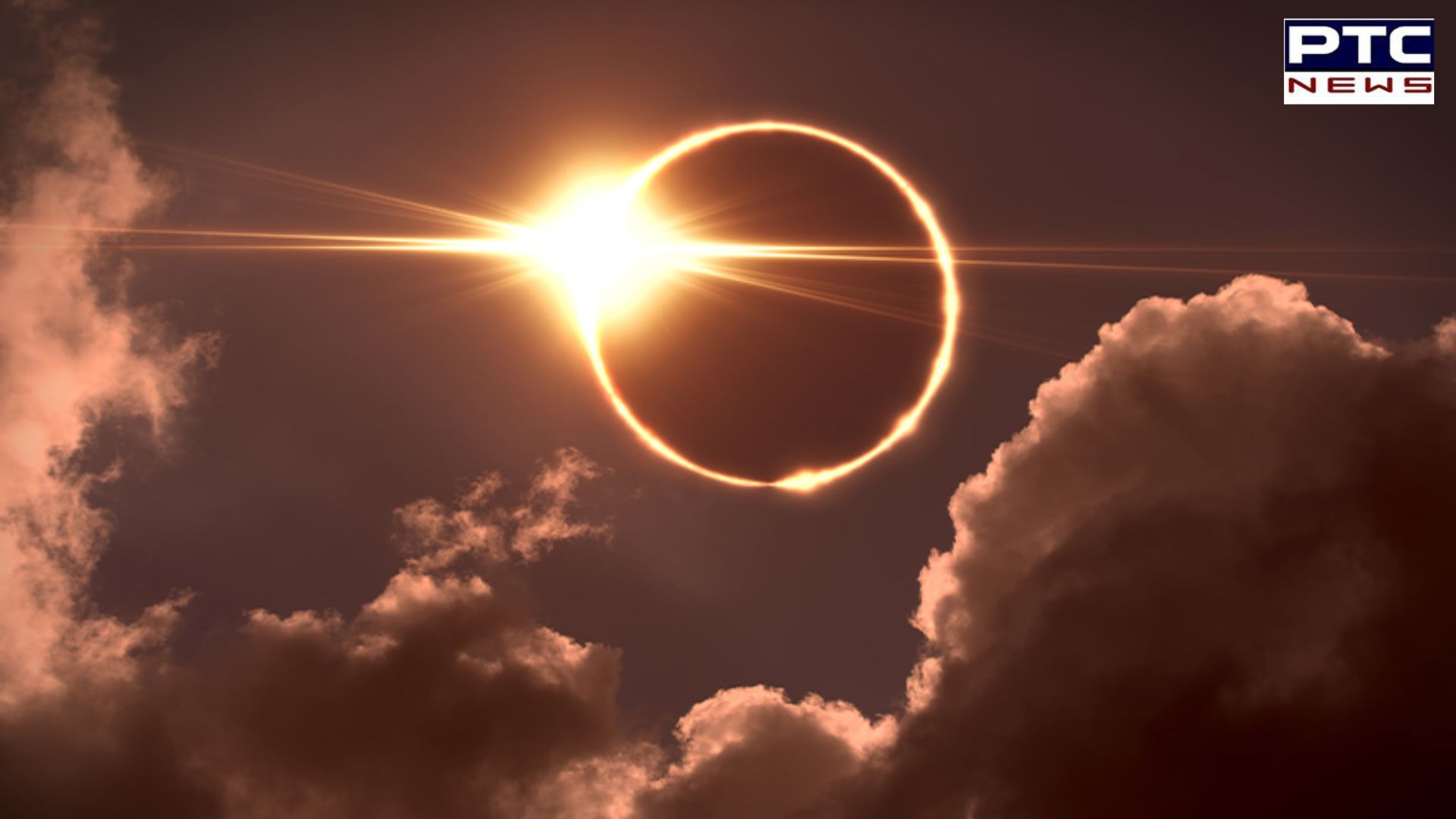

Know why India's solar satellite won't witness today's total solar eclipse
PTC News Desk: As a total solar eclipse graces the skies over North America, India's pioneering space-based solar observatory, Aditya L1, continues its uninterrupted study of the Sun. While enthusiasts in the USA gear up for a once-in-a-century spectacle, Aditya L1 remains poised in its position, offering a continuous view of our solar system's star. The total solar eclipse, a rare cosmic event captivating the attention of millions, will traverse Mexico, the United States, and Canada, casting a shadow over the Earth and plunging regions into momentary darkness.
For the first time in almost a century, parts of New York State are set to experience a total eclipse, sparking excitement and preparations among locals and visitors alike. NASA, at the forefront of celestial observation, has organised special research initiatives, including flights to chase the eclipse's shadow and conduct various experiments. Despite the event lasting several hours, the pinnacle of the eclipse, when daylight transitions into twilight, will only endure approximately four minutes, offering a fleeting glimpse of cosmic grandeur.
/ptc-news/media/media_files/k5pyfezNOiPD91aScotR.jpg)
However, India's Aditya L1 satellite, a testament to the country's burgeoning space research capabilities, will not partake in witnessing this celestial phenomenon. This is not an oversight by the Indian Space Research Organization (ISRO); rather, it's a deliberate positioning choice. Placed strategically at the Lagrange Point 1 (L1), Aditya L1 enjoys an unobstructed view of the Sun throughout the year. Indian scientists opted for this location to ensure continuous observation without the interference of eclipses or occultation.
Speaking to news agencies, ISRO chairman S. Somanath explained, "Aditya L1 spacecraft will not see the solar eclipse as the moon is behind the spacecraft, at the Lagrange Point 1 (L1 point), the eclipse that is visible on Earth doesn't have much significance at that location." Positioned approximately 1.5 million kilometers from Earth, Aditya L1 orbits the Sun-Earth system in a halo orbit around L1, granting it an unparalleled vantage point for studying solar activity and its impact on space weather in real-time.
Weighing nearly 1,500 kilograms, Aditya L1 represents India's maiden dedicated mission to monitor the Sun's dynamics, particularly during periods of heightened activity. With a budget of Rs 400 crore, the solar observatory is equipped with sophisticated instruments, including the Visible Emission Line Coronagraph (VELC), which generates artificial solar eclipses to facilitate detailed solar studies.
Renowned solar physicist Dr. Dipankar Banerjee from the Indian Institute of Astrophysics (IIAP) highlights the significance of Aditya L1, offering scientists an unprecedented opportunity to observe and analyse the Sun's corona from space. While Dr. Banerjee conducts ground experiments in Dallas, Texas during the eclipse, data from Aditya L1 will be juxtaposed to enhance scientific understanding.
Also Read: Canada accuses India and Pakistan of election interference
Project Director Nigar Shaji emphasises that the eclipse holds no transformative effect on the Sun. Instead, Aditya L1 will leverage special observation modes to scrutinise coronal structures, synchronising with ground-based observations for comprehensive insights. Aditya L1 carries seven payloads, enabling multi-dimensional analysis of the Sun's photosphere, chromosphere, and corona, paving the way for groundbreaking discoveries in solar physics and space weather forecasting.
According to NASA, it is crucial to exercise caution when observing the Sun. Except for the brief total phase of a total solar eclipse, during which the Moon entirely obscures the Sun's bright face, direct viewing of the Sun without proper eye protection is hazardous.
Looking at any portion of the Sun's intense brightness through a camera lens, binoculars, or a telescope without a specialised solar filter securely attached over the optics' front can result in immediate and severe eye injury.
Also Read: Rahul Gandhi, the 'best finisher' in politics like Dhoni in cricket: Rajnath Singh
Also Read: Ranbir Kapoor treats Alia Bhatt to a drive in their new Rs 8 crore Bentley: Catch a glimpse!
(Inputs from agencies)
-
